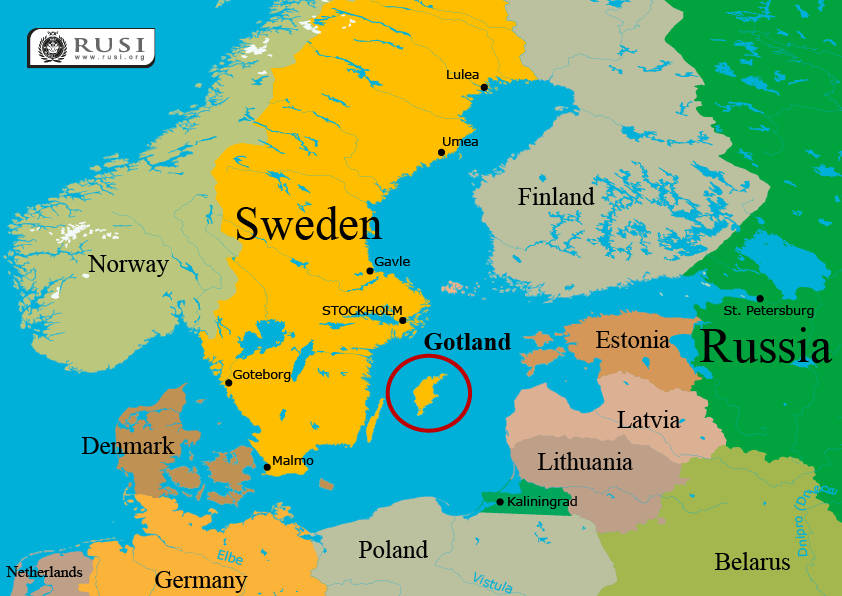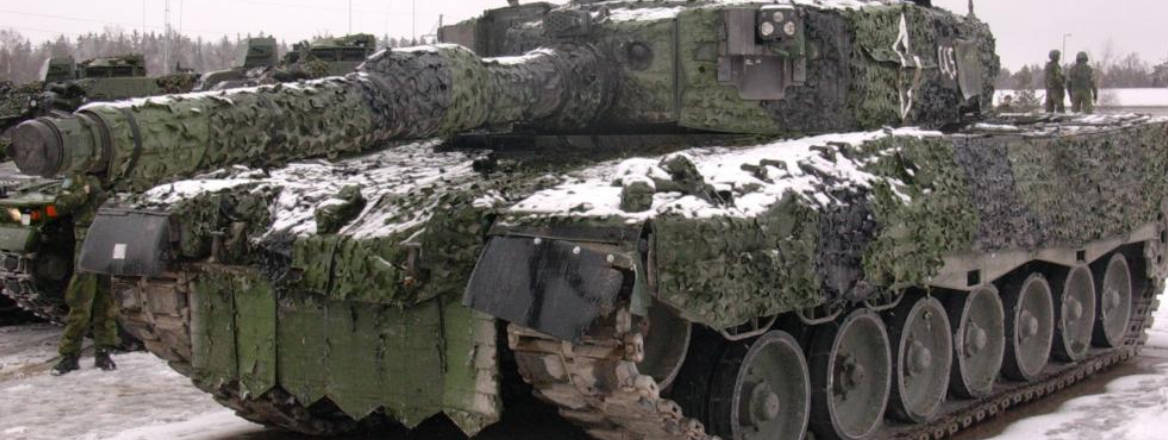Did a Top Secret Threat Assessment Prompt Sweden to Deploy Troops to the Baltic Island of Gotland?
In a move that surprised casual observers, the Swedish Armed Forces announced on 14 September a permanent and immediate deployment of forces to the Baltic island of Gotland. The move reflects a worsening security situation in the region over the longer term.
The wider Baltic region could have become a calm backwater in Europe, but it is now at the centre of the new confrontation between Russia and the West. This is due to Russia’s opportunistic and aggressive behaviour, especially since the invasion and illegal annexation of Crimea in 2014 and the subsequent Kremlin-supported war in Ukraine.
The island of Gotland, in the middle of the Baltic Sea, has quickly come to the fore as an important piece in this worsening security puzzle.
At the end of the Cold War, Sweden first scaled back its defence stance, and then abandoned it in favour of a much smaller, more agile and less costly expeditionary force structure. Globalisation and the general progress of mankind would make inter-state war a thing of the past, it was argued.
Peacekeeping operations in Bosnia, Afghanistan, off the Horn of Africa and in the Mediterranean followed. When the three Baltic republics regained their independence and later membership of NATO and the EU, the entire region was transformed, so there was genuine cause for optimism in planning for Swedish security. Lately, however, this has been replaced by a renewed focus on national defence.

Why Gotland and why now?
Apart from modern Home Guard units – no longer the Dad’s Army of yesteryear – Gotland has been without regular armed forces since 2004, when Gotlands regemente, an armoured training regiment, was disbanded.
At its peak, during the Cold War, the regiment had about 25,000 troops, including armour, mechanised infantry, artillery, anti-aircraft artillery and a substantial coastal defence component. Based on conscription, the bulk of the troops would be mobilised in a crisis and sent from the mainland.
A remilitarisation of Gotland formed part of the defence bill of 2015, although it was resisted by the Armed Forces staff, seemingly for military–bureaucratic reasons. The ‘Gotland package’ was to be implemented by no later than 2018 and consist of a standing mechanised company with Hagglunds CV90 armoured fighting vehicles, and a tank company equipped with Leopard 2s.
The units were to be organised as a battlegroup and, with some additional command and control units, form the core of a permanent garrison on the island. New facilities are being built as the old regimental establishments had been sold off.
But on 14 September the Swedish government announced that these plans would be sped up, with a permanent and immediate deployment of forces to Gotland. What seems to have triggered the deployment of the operational reserve – a mechanised company of regulars – earlier than planned, was reportedly a new and highly classified intelligence assessment pointing to an increased threat from Russia.
The assessment has not been publicly disclosed, but the phrasing in official statements by the Supreme Commander of the Swedish Armed Forces, General Micael Byden, has changed from ‘open conflict is unlikely’ in January 2016 to ‘the probability of an attack on Sweden is low’ in September. The choice of words may seem a matter of semantics, but it is noteworthy in the continuous internal and external signalling in relation to assessing the Russian threat.
General Byden has also recently and publicly expressed the need for more units on Gotland, such as air defence and surface-to-surface missiles. This represents a hardening of his position. It was only in January this year that the head of the Swedish Army, Major General Anders Brannstrom, was publicly criticised by the Armed Forces staff for suggesting that Sweden might be at war in a few years’ time. Now, however, the need for precautionary deployments appears to have been acknowledged.
A readiness exercise of the operational reserve with a deployment to Gotland was thus transformed into a new and permanent deployment; at the end of the exercise, the unit was ordered to remain on the island.
The presence will be rotational and the permanent battlegroup will take up its role in the middle of 2017, six months earlier than planned. In addition, all units in the armed forces have for the past few months been subject to readiness inspections without advance notice in order to ensure operational capability.
The combination of the deteriorating overall security situation over the longer term and a new intelligence assessment seemed to have tipped the balance.
The external signalling aspect of this should not be ignored: Sweden’s sometimes cumbersome and bureaucratic military system can be very fleet-footed when it needs to be.
What next?
Historically, Gotland presents a perennial problem for Swedish defence planners and the solutions have varied over time; they have often been different from those on mainland Sweden and have at times triggered organisational innovation.
The old adage that Gotland forms an ‘unsinkable carrier’ in the middle of the Baltic Sea still has some truth to it. But in a more difficult security situation, with Russian anti-access/area Denial (A2/AD) bubbles springing up in the Baltic region, and longer ranges for networked sensors and weapons, future defence approaches need to be adapted again. Sweden is not likely to fall victim to military nostalgia and revert to the setup of an earlier era.
There has so far been more debate on the role army units can play and less on naval and air assets in an emerging defence concept for Gotland and the surrounding Swedish sea and airspace. The central role of sea-borne trade for all the coastal nations around the Baltic Sea, as well as the recent construction application for a second natural gas pipeline by the Russian-dominated Nord Stream 2 consortium, constitute other dimensions to regional security which place Gotland at their centre.
The speed bump that the recent deployment to Gotland presents to a potential aggressor is of limited tactical significance. However, it does mean that anyone wanting to use Gotland’s territory as part of a larger operation in the region would immediately be met by armed force.
In all likelihood, there will be successive deployments of assets and employments of these in new combinations made possible by application of available and new technology. On the list of assets are ground-based air defences, surface-to-surface missiles and coastal defence units. These assets, coupled with an intensified exercise schedule on land, in the air and at sea – including more of a regular international presence – will over time be of operational significance.
Swedish territory matters in a crisis as well as in a high-end scenario in the Baltic Sea region. The cycle of deployments will continue until a potential aggressor retreats from the option of using of force. More will follow – watch this space.
The views expressed in this article are the views of the author and can in no way be taken to reflect the views of RUSI or any other institution.

